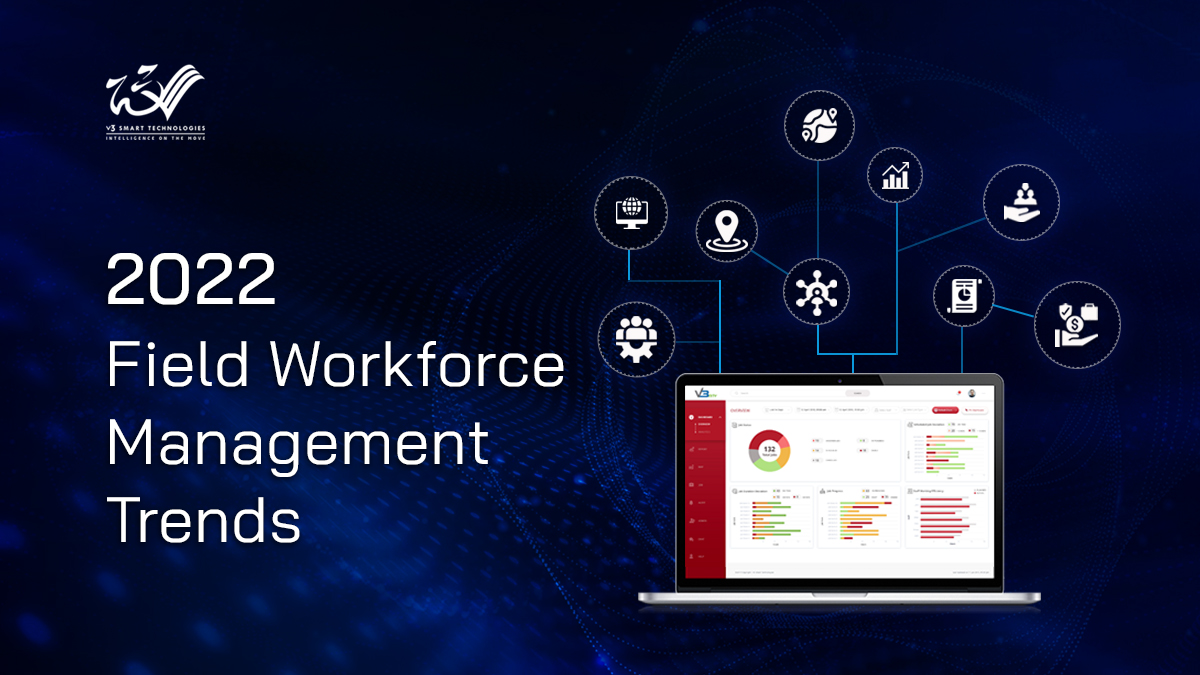Top 5 current field service management trends in 2022
February 7, 2022
Field service management is an area that is constantly evolving. New trends are being introduced frequently to improve services and help businesses adapt to the aftermath of the pandemic. To keep up with the times, business owners will want to ensure that their customers get the best in terms of efficiency and effectiveness, as failure to meet demand may lead to the downfall of any business.
Below are the top 5 field service management trends expected in the year 2022. Read on to find out how you can make use of these trends to improve your field service quality.
1. Utilization of New Technologies
For field service staff and managers, having remote access to data that is accurate to the minute helps greatly with many things, from improving productivity and team communications to solving customer issues with minimal delay. Technologies such as IoT, remote employee tracking, real-time alerts, and the use of augmented reality as service support are being adopted at a rapid pace. These technologies are usually available on mobile platforms, which makes it easy for staff to respond to situations on the go.
For example, when working on the ground, it is difficult for the company and staff to ensure service integrity. Companies may find it challenging to locate their staff, and staff may find it difficult to reach the customers. An employee tracking system with real-time alerts will help to solve this issue. Other technologies include AI which is used to assist with on-site work, as well as workflow management tools for task completion tracking and schedule planning.
2. Backend Process Automation
With so much going on behind the scenes, backend process automation is vital for large scale field operations to keep everything on track. A business that runs heavily on paper-driven processes and back-and-forth communications will always fall flat compared to one that has its operations automated.
Processes that can be automated include job scheduling, task management, report generation, data collection and record keeping, on top of many others. Through automation, businesses can reduce mundane, repetitive and labor-intensive tasks, improve time management and reduce workload, and allow staff to work with less supervision needed. Upgrading your backend processes along with your frontend will connect all components within your business together and ensure the smooth flow of services.
3. Personalized, Customer-centric Focus
In the past couple of years, businesses have evolved during the pandemic to provide customers with more forms of service, such as online appointment scheduling and alerts, video chat support, contactless delivery drop-offs, and service provision via multiple platforms. Customers have grown used to having more options and convenience at their fingertips, which is why it is best to continue offering them and expand on such services.
Field service agents should also be given autonomy to make decisions when problem solving and to customize offers for customers. It will reflect positively on your business when customers can get their issues resolved with less points of contact. Necessary training should be provided to field service agents to equip them with adequate interpersonal skills and service knowledge.
4. Integrating IoT into Field Service
IoT connectivity has helped field service businesses improve communications, scheduling and reporting in real-time, and provide important data for analysis. For example, in a pest control agency, integrating IoT sensors into their field service management system will aid greatly in pest detection, enable them to dispatch field staff on immediate notice, and allow field staff to communicate in real-time with the back office on pest situations through an IoT connected mobile app.
Integrating IoT technology with existing systems will provide your field staff with information whenever they need it, and the means to communicate quickly to resolve issues on the spot without having to make multiple trips, hence increasing customer satisfaction. Moreover, with IoT’s additional benefit of predictive analytics, businesses can forecast demands and improve resource planning to cut down on expenses.
5. Inventory & Asset Management
During the pandemic in the last two years, many industries’ supply chains slowed down as they struggled to meet high demands despite low manpower. Businesses without a reliable way to track and manage their inventory and assets will often find themselves falling behind. Similarly for the field service industry, it is crucial to track asset movements so as to keep up with customer requests, and ensure adequate resources are available for following up on services.
With the help of an inventory or asset management system, field service businesses can track information regarding inventory, staff and vehicle availability instantly. These systems will also provide alerts for inventory restock and vehicle maintenance, making sure you will always be prepared to meet customer demands while maximizing service uptime.
Conclusion
Post-pandemic, changes such as offering customers more varied service options and personalized service are here to stay. People have grown used to and now expect the convenience of service in the form of alerts, advanced scheduling, and remote support. IoT and backend process automation are also amongst these key trends driving the field service industry forward in 2022.

